#Dirk Pauwels
Text
Lies Pauwels wordt 55...
De Gentse actrice Lies Pauwels viert vandaag haar 55ste verjaardag (foto Fred Debrock – wikiportret.nl).
Continue reading Untitled
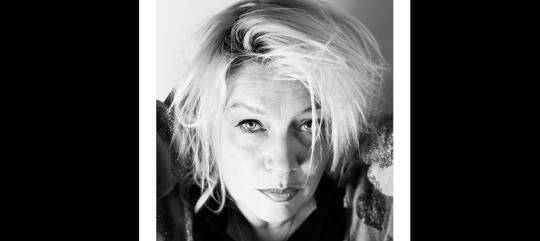
View On WordPress
0 notes
Photo
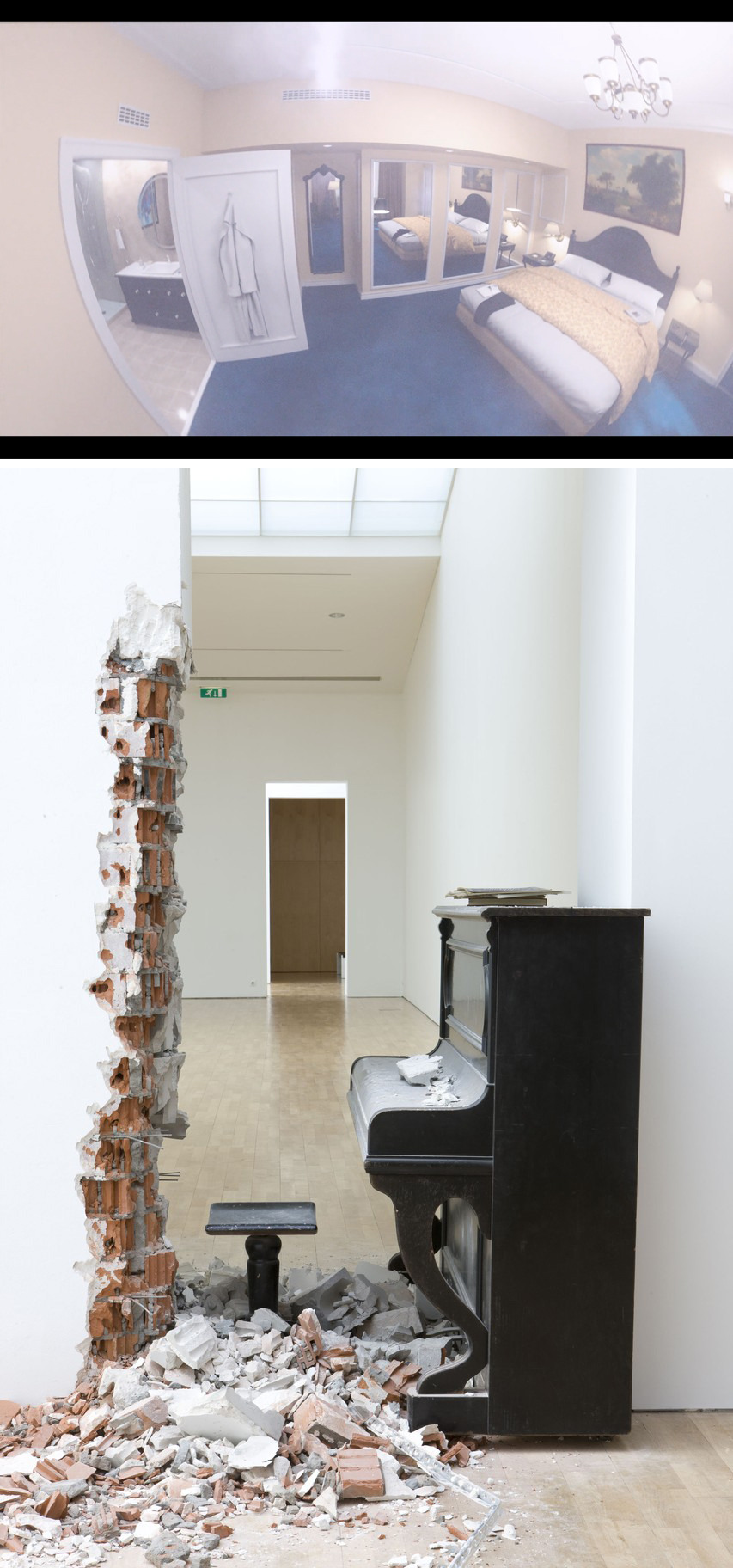
Top, screen capture from Moving Target Shadow Detection, directed by Sung Tieu, 2022. Via. Bottom, Andreas Slominski, Piano, 1998, mixed media, dimensions variable. Installation shot by Dirk Pauwels at SMAK. Via.
--
In a new intelligence assessment, the CIA has ruled out that the mysterious symptoms known as Havana Syndrome are the result of a sustained global campaign by a hostile power aimed at hundreds of U.S. diplomats and spies, six people briefed on the matter told NBC News.
In about two dozen cases, the agency cannot rule out foreign involvement, including many of the cases that originated at the U.S. Embassy in Havana beginning in 2016. Another group of cases is considered unresolved. But in hundreds of other cases of possible symptoms, the agency has found plausible alternative explanations, the sources said. (...)
The CIA declined to comment. (...)
Russia has consistently denied any involvement.
Ken Dilanian and Josh Lederman, from CIA says 'Havana Syndrome' not result of sustained campaign by hostile power - In about two dozen cases, however, the agency can’t rule out foreign involvement, including many of the cases that originated at the U.S. Embassy in Havana beginning in 2016, for NBC News, January 20, 2022.
--
Amazon has abandoned its much-maligned campaign of paying employees to share positive messages on social media, scrubbing online messages that were meant to improve the tech giant’s image to potential workers it needs to achieve continued growth. (...)
According to a document obtained and published by The Intercept last year, fulfilment centre ambassadors received training on how to leave “no lie unchallenged”, with responses such as: “No, that’s not right. I worked in an Amazon FC for over four years and never saw anyone urinate in a bottle”. Handpicked workers were told to reply in a “blunt” but “polite” manner to what the company considered untruths posted by politicians, labour rights activists and indeed any other critics, although they were told not to target journalists. One typical tweet read: “I feel proud to work for Amazon — they’ve taken good care of me. Much better than some of my previous employers.” Others took aim at the suggestion Amazon workers did not have adequate time to take toilet breaks.
Dave Lee, from Amazon abandons influence campaign designed to attract staff, for the Financial Times, January 26, 2022.
2 notes
·
View notes
Photo
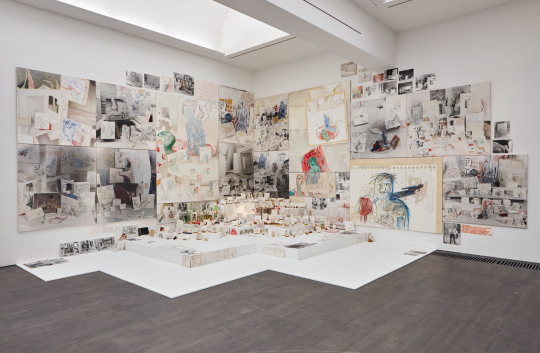
Anna Oppermann, Mythos und Aufklärung, 1985
Installation view S.MA.K. 2017
Photo: Dirk Pauwels
35 notes
·
View notes
Photo

Kris Martin ‘EXIT’ Installation 2020. Photography: Dirk Pauwels
44 notes
·
View notes
Photo
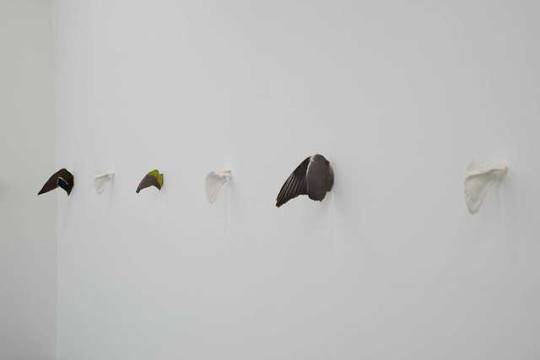
(via BMW Art Journey Winner 2018: Zac Langdon-Pole,detail Assimilation Study, 2017. Photo: Dirk Pauwels (06/2018))
Zac Langdon-Pole
1 note
·
View note
Text
제 9-1편 "Michael E. Smith"의 작업 및 전시 사진





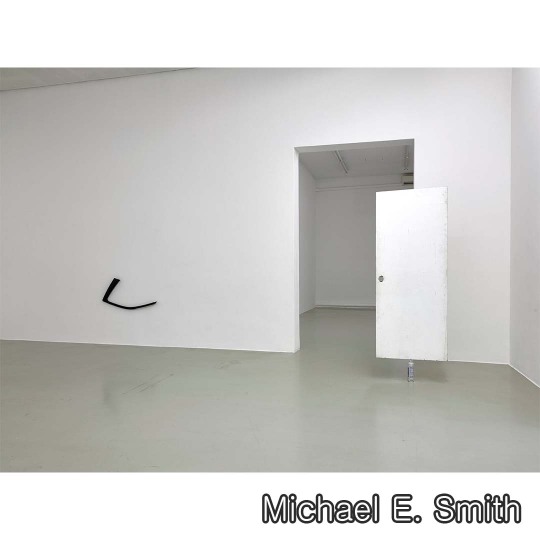
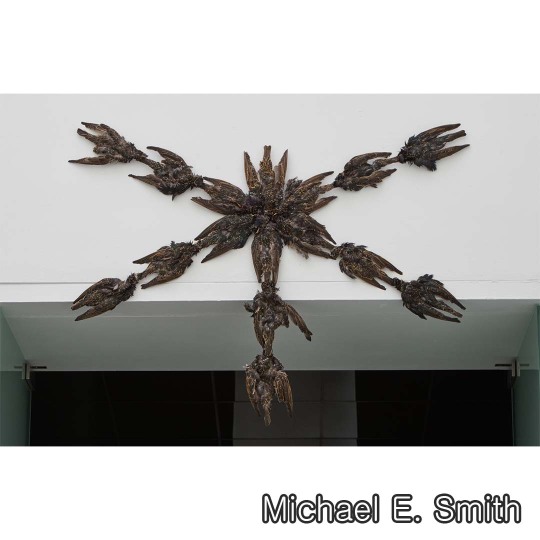

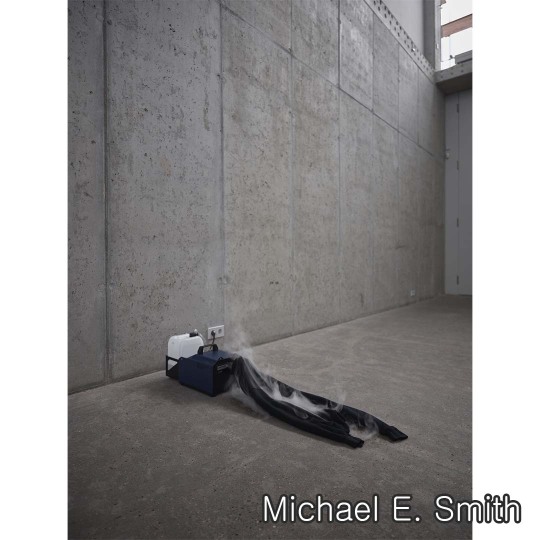
1. Detroit Slum, photo by detroitghettos.wordpress.com
2. 을지로 photo by m.hankookilbo.com/News/Read/A2020082617020003471
3. Jean-Baptiste-Simeon Chardin, Un verre d’eau et une cruche
4. Jessica Stockholder, My father's backyard, 1983, by jessicastockholder.info
5. Peter Zumthor, Kunsthaus Bregenz, by josegottret.files.wordpress.com
6. Micheal E. Smith, Exhitibition view at Kunstverein Hannover 2015, Images courtesy of Kunstverein Hannover. Video courtesy of the artist and KOW, Berlin. Photos by Ladislav Zajac.
7. Michael E. Smith, Exhitibition view at S.M.A.K., Ghent, Belgium, 2017, Dirk Pauwels, all images copyright and courtesy of the artist and S.M.A.K.
8. Michael E. Smith, Untitled, 2017, Photo credit Michael E. Smith, Courtesy KOW Berlin and artist
9. Michael E. Smith, Untitled, 2017, Smoke machine, sweatshirt, 29 x 140 x 30 cm, photo by artviewer.org
0 notes
Photo

JIMMY DURHAM AND LAURA OWENS – SEPARATED AT BIRTH?
THE WEEKLY PIC: Right now, the Whitney Museum has up two retrospectives that could hardly seem more different.
Jimmie Durham’s most typical work consists of found-object assemblages that deal with thorny social issues: The treatment of Native Americans; the nature of identity and gender. (His piece, above at left, is titled “Malinche” and was finished in 1992.)
Laura Owens makes extremely playful canvases, created with real bravura, that talk, among other things, about the craft and history of painting, and what the medium might still have to say in the 21st century. (Her piece, from 1998, is untitled.)
Seeing one show right after the other, however, I was surprised to feel a deeper gestalt – or maybe it’s a Zeitgeist – that somehow seemed to link them. Both artists work with systems of meaning that have broken down and that no longer deliver parsable messages. Both seem to take a kind of secret pleasure in that breakdown, seeing it as an opportunity rather than an obstacle; as an occasion for wit and play rather than a source of mourning.
Or, more likely, they are both working in art’s great realist tradition, depicting our current world as they find it.
Not necessarily a comforting thought.
(Durham’s image is courtesy the Stedelijk Museum voor Actuele Kunst (SMAK), Ghent, Belgium. Image ©S.M.A.K./Dirk Pauwels. The Owens is collection of the artist, courtesy the artist/Gavin Brown’s Enterprise, New York and Rome; Sadie Coles HQ, London; and Galerie Gisela Capitain, Cologne; © Laura Owens)
20 notes
·
View notes
Photo

"Oriol Vilanova: Anything, Everything" is now open! Vilanova organizes his collection of more than 75,000 postcards into artworks that address how images shape our knowledge of the world. [Installation view of Vilanova's "Anything, Everything," 2015–ongoing, at M-Museum Leuven, 2016. Image courtesy of the artist. 📷 Dirk Pauwels] #AlbrightKnox #Art #Museum #ArtMuseum #Buffalo #BuffaloNY #OriolVilanova @oriolvilanova http://bit.ly/2Hfjtsi
0 notes
Photo
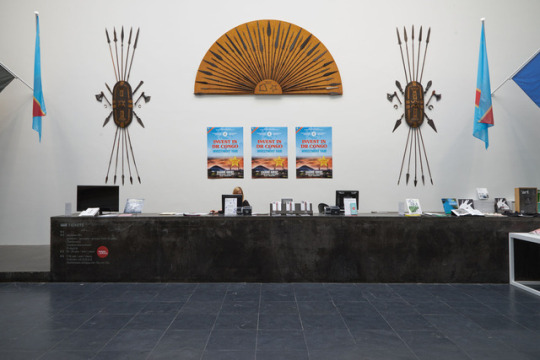




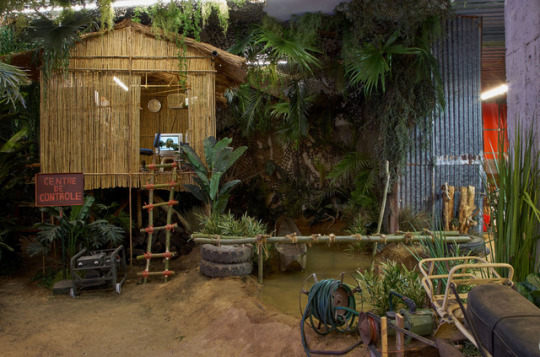


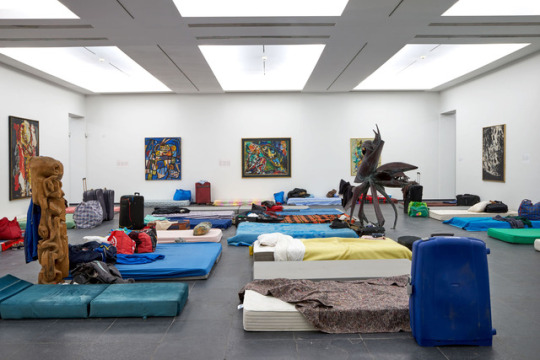
I helped Christophe Buchel with the graphic design togheter with Viktor Van den Braembussche. You can see this exhibition now at SMAK!
Photo’s: © Dirk Pauwels
1 note
·
View note
Photo
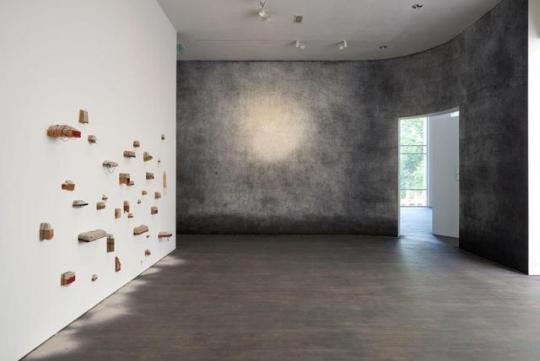
‘29 kilo, 7 u 10′’- How beautiful it is and how easily it can be broken. S.M.A.K. Gent, Belgium.
Photo by Dirk Pauwels
1 note
·
View note
Text
Geert Dehaes intervjoeweit
Nen uup BB’s (Bekende Brusseleirs) Oep destag 15 maa 2018 on 20.00 eure
Geert Dehaes, Be.Brusseleir
Mars Moriau, brusseleir van ‘t joer
Caroline Pauwels, Brusseles van ‘t joer Christian De Coninck, Brusseleir van ‘t joer Dirk Lagast, BK (Bekende Koekelbergeneir), Vlomse scheipe

Gemienschapscentrom De Platoo, Aveneu de Pantheon 14, Koekelberg
View On WordPress
0 notes
Text
ARTnews in Brief: News from Around the Art World—Week of June 24, 2019 - ARTnews
ARTnews in Brief: News from Around the Art World—Week of June 24, 2019 – ARTnews
Ahmet Öğüt, The Castle of Vooruit, 2012, which will be included in the Art Encounters Biennial in Timișoara, Romania.
COURTESY THE ARTIST/DIRK PAUWELS
“ARTnews in Brief” is a continually updated weekly post that details goings-on in the international art industry.
Monday, June 24, 2019
Mohamed Bourouissa Heads to Blum & Poe
Blum & Poegallery, of Los Angeles, New York, and Tokyo, now…
View On WordPress
0 notes
Link
CO-LOCATIE #2
DE VLOER, DE OUDE STADSBIBLIOTHEEK GENT ZUID
INGANG ACHTERAAN PARKZIJDE, 3DE VERDIEPING
29.11.2018 OPENING
VANAF 20 U
FOOD MATTERS
all you need is the lavatory
CONCERT the singing painters meet carver & horn
VANAF 21 U
30.11. — 29.12.2018
OPEN DON - ZON
14U TOT 18U
Artists
aaron daem, antoine goossens, astridcollectief, bart de clercq,
bart maris, benoit felix, bjorn pauwels & nora dedecker, bram
borloo, bram van stappen, christophe lezaire, dirk bogaert,
dirk zoete, elien ronse, emilie de vlam, emma van roey, frederic
geurts, geert marijnissen, griet van de velde, hans verhaegen,
janes zeghers, jeroen frateur, jesse cremers, johan de wilde,
karen vermeren, katelijne de corte, klaas vanhee, kristof lemmens,
maarten van roy, maud vande veire, melissa mabesoone, merel
vandecasteele, merlyn paridaen, natasja mabesoone, peter
morrens, pieter de clercq, reinhard doubrawa, renée pevernagie,
sacha eckes, sarah westphal, steffie van cauter, stijn van dorpe,
william ludwig lutgens, thuy le thi thu & thomas de geyter
What
43 hosts / 43 guests. Each artist participates as
host of one of the other artists and is likewise
guest of one of the other artists. The host could
be seen as the passive conglomerate, the guest
as intruder, as invité(e), invited to discuss the
work of his/ her host and point a favourite
object - or work - or item, taking advantage of
the fact that he or she is the active character in a
meeting of two persons who know each other or
don’t. Croxhapox won’t interfere in the process
of meeting, talk and choice. A group show made
by 63 artists involved in 43 encounters.
0 notes
Text
Hyperallergic: Jimmie Durham Retrospective Reignites Debate Over His Claim of Native Ancestry
Jimmie Durham, “Head” (2006), wood, papier-mâché, hair, seashell, turquoise, metal tray, 10 x 16 x 16 in, Fondazione Morra Greco, Naples, Italy (courtesy of kurimanzutto, Mexico City)
MINNEAPOLIS — The traveling retrospective Jimmie Durham: At the Center of the World opened last week at the Walker Art Center. It is a massive exhibition, with nearly 150 works dating from 1970 to the present, and accompanied by a 320-page catalogue. That a solo exhibition of this size and scope would be devoted to an artist who has claimed Native American heritage is noteworthy, especially given how little space is usually given to Native artists in mainstream museums. The only problem is that Durham isn’t a member of any Native American tribe; available information and the statements he has made about his origins leave much room for doubt and debate about his Native ancestry.
Organized by the Hammer Museum in Los Angeles, At the Center of the World was curated by the Hammer’s senior curator, Anne Ellegood, with curatorial assistant MacKenzie Stevens. After its run at the Walker Art Center — where it was coordinated by curator Vincenzo de Bellis, with Misa Jeffereis — it will travel to the Whitney Museum in New York and then the new Remai Modern in Saskatoon, Canada.
Jimmie Durham, “Malinche” (1988–92), guava, pine branches, oak, snakeskin, polyester bra soaked in acrylic resin and painted gold, watercolor, cactus leaf, canvas, cotton cloth, metal, rope, feathers, plastic jewelry, glass eye, 70 x 23 5/8 x 35 in, Stedelijk Museum voor Actuele Kunst (SMAK), Ghent, Belgium (photo © SMAK / Dirk Pauwels)
In an interview published in Interventions and Provocations: Conversations on Art, Culture, and Resistance (1998), Durham told Susan Canning that he grew up in a household that spoke Cherokee in the home. According to Lucy Lippard’s glowing piece about him, “Postmodernist ‘Savage’” (1993) in Art in America, he belonged to the peyote-smoking Native American Church. Mary Modeen wrote that Durham is one quarter Cherokee. His bio, originally posted on the Hammer’s website and now gone (though available on archived versions of press materials), states that he is “a Native American of Cherokee descent.”
However, Durham has also said that he is not Cherokee. Following the appearance of Lippard’s “Postmodernist ‘Savage’” in 1993, he wrote a letter to the magazine, which it published, where he wrote: “I am not Cherokee. I am not an American Indian. This is in concurrence with recent US legislation, because I am not enrolled on any reservation or in any American Indian community.”
The Indian Arts and Crafts Act
The “recent US legislation” Durham was referring to was the Indian Arts and Crafts Act (IACA), passed in 1990, which makes it illegal to sell art if you falsely claim to be American Indian, Native American, or a member of any federally recognized tribe. “It’s essentially a truth in advertising law,” Bree Black Horse, an attorney who specializes in Indian law, told Hyperallergic.
Even if Durham’s claims to Cherokee heritage are true, he can’t legally sell his work in the United States, explains Black Horse, because he’s not a tribal member. The works exhibited as part of At the Center of the World aren’t for sale, “so technically doesn’t run afoul of the law, but it definitely violates the spirit of the law,” Black Horse says.
In a 1993 article, Jonathan Tilove of the Newhouse News Service, wrote that following the passage of the IACA, two galleries in Santa Fe and San Francisco canceled Durham shows. Following those events, Geoffrey Stamm, assistant general manager of the Indian Arts and Crafts Board, “warned that when enforcement begins, ‘if Jimmie Durham is selling art work as a Cherokee and he does not have certification from the tribe, he will be arrested,’” Tilove wrote. “Durham apparently took the threat seriously. He has since written Art in America citing the law and declaring, ‘I am not an American Indian.’”
Durham has also not lived in the United States for 30 years — first settling in Cuernavaca, Mexico beginning in 1987 and then in Europe since 1994 — and has stopped making art about Native identity. However, At the Center of the World prominently features his earlier works, complete with Native imagery, works that use the Cherokee language, works that reference Cherokee history, and works that imply the artist’s Native identity.
Jimmie Durham, “Self-portrait” (1986), canvas, cedar, acrylic paint, metal, synthetic hair, scrap fur, dyed chicken feathers, human rib bones, sheep bones, seashell, thread, 78 x 30 x 9 in, Whitney Museum of American Art, New York (photo ©Whitney Museum)
To give an example, one of the first works you see as you enter the show is a sculptural self-portrait of the artist from 1986. It’s a canvas outline of Durham’s body, painted in a shade of brown. “My skin is not really this dark,” he has written on one of the legs, “but I am sure that many Indians have coppery skin.” One of the sculpture’s only three-dimensional elements is the male anatomy, painted yellow and orange, which is flanked with the words “Indian penises are unusually large and colorful.”
As part of programming for the show, the Walker invited Chayenne Arapaho artist Hock E Aye VI Edgar Heap of Birds and Navajo contemporary Native arts scholar Shanna Heap of Birds to speak last week about their own work in the field. During the question and answer session, Shanna Heap of Birds responded to a question about Durham’s Native identity that she had only recently learned of the controversy.
“When I think about Durham’s work — the 40 plus years that he put into it and also looking at the impact that he had on various discourses — like Jean Fisher I think that art is not reducible to identity,” she said. “It has to be seen, like [Fisher] said, as a material realization, as a philosophical act, how you live your life.” As a Navajo woman herself, Heap of Birds said she didn’t feel she had the right to tell someone whether they are Native American or not. She added: “Because that’s their experience. It’s not my business. I know who I am.”
Tribal Sovereignty
Durham’s supporters cite the fact that the artist has never sought Cherokee citizenship as a reason why it’s acceptable for him to say he’s Cherokee without actually being a member of a tribe. His refusal to seek citizenship is seen as an an act of defiance toward established systems for categorizing and confirming Native American identity. “Blood quantum is a bunch of racist nonsense,” Durham said in a 2002 article by Daniel Grant. “Saying you are Indian or not sounds good, but it also makes people choose one ancestry over another. I don’t see urban Indians as second class citizens, or reserve Indians as the epitome of all that is truly red.”
But curator and Anishinaabe poet Heid E. Erdrich, of Minneapolis, argues that you can’t reject something of which you were never a part. “He frames his lack of status as some sort of rejection,” Erdrich told Hyperallergic. “For us, it’s a rejection of Native sovereignty, which we’re bound to uphold as citizens and descendants of our nations.”
“A tribal nation gets to self-determine who is citizen and who isn’t, and that’s the law. That’s our law,” said Seneca choreographer and curator Rosy Simas, who, along with Erdrich and a group of other Native artists and curators, has been meeting with the Walker to try to make changes to the exhibition. “So when someone decides to say, ‘Oh, I’m Cherokee and I don’t care what other Cherokee people say or the Cherokee Nation says,’ or, ‘My lineage doesn’t show that I’m Cherokee but I’m going to say that I’m Cherokee,’ it’s completely disrespecting the sovereignty of that nation.”
Unclear Origins
Lippard wrote that Durham was born into the Wolf Clan in 1940, in Nevada County, Arkansas. Meanwhile, in a recent issue of Flash Art, Jennifer Piejko wrote that he was born in Washington, Arkansas, which is in Hempstead County. “His family inhabited a Cherokee reservation for over a century, following the Indian Removal Act of 1830,” Piejko wrote.
However, there is no birth record of the surname Durham for 1940 in Nevada County or Hempstead County, according to America Meredith, a Swedish-Cherokee writer and scholar, and editor of First American Art Magazine. “Durham was careful to never mention a family member’s name or list his birth date, but MacKenzie Stevens’s Selected Chronology in the At the Center of the World catalogue listed his birthday as July 10, 1940,” Meredith said in an email.
Kathy Griffin White, a Cherokee genealogist, did find record of a Jimmie Bob Durham’s birth in Harris, Texas in 1940, from the Texas Department of Health. The information White found suggests “he is not telling the truth about his birth,” she said in an email.
Detail of Jimmie Durham, “The Indian’s Family” (1985) (photo by the author for Hyperallergic)
Meanwhile, Meredith and White point to a page on findagrave.com, a crowd-sourced website, that features a photo of Durham’s parents, Jerry Loren Durham and Ethel Pauline Simmons Durham. The image of this couple is the same as the one Durham uses, along with the caption “The Indian’s Parents (frontal),” in his piece “The Indian’s Family” (1985) , which is now on view at the Walker. “They had two older daughters and another son, which matches Durham’s descriptions of his family,” Meredith said. “Ethel was born in Shover Springs, Hempstead County, Arkansas, and Jerry was likely born in Sutton, Nevada County, Arkansas.”
The findagrave.com entry lists Willie and Dallie Durham and Alden Fruman Simmons and Minnie Lou Card Simmons as Jimmie Durham’s grandparents. Durham mentions Dallie Harris, who married Willie Durham, in My Book, The East London Coelacanth, Sometimes Called, Troubled Waters; The Story of British Sea-Power, Begins With a Chapter Titled: Metal-Fatigue and Social Politics, published on occasion of his exhibition at the Institute of Contemporary Arts in London in 1993. “After 300 years of being Cherokee, she could still do an old-fashioned English fry-up,” Durham wrote of his grandmother, “with Cherokee tomatoes, eggs that came from what is ultimately a Chinese bird, sausages from the Tartars and all.”
According to census records found by White, the parents of Durham’s grandmother, Dallie Harris (1837–1957), were Jerry and Mary Harris. White says there is a John Harris listed on records of Western Cherokee in Arkansas, published in 1828, but Durham’s great-grandfather Jerry Harris was born in Georgia, according to his census records. White adds that the fact Durham’s family members are listed on census records from the 19th century at all is further indication that they were not Cherokee. “The Cherokee were never on a US census until 1900,” she said.
On its website, First American Art Magazine has published extensive resources related to the publication’s research into Durham’s genealogy. Just this week, Meredith and nine other artists and scholars published an open letter denouncing Durham’s claims to Cherokee identity.
Hyperallergic attempted to contact Durham to discuss these issues through his gallery in Europe, Michel Rein, as well as through the Walker Art Center, but received no answer.
Disclaimer
Beneath the main introductory wall text for Durham’s retrospective at the Walker, in small print, is a disclaimer. It reads:
While Jimmie Durham self-identifies as Cherokee, he is not recognized by any of the three Cherokee Nations, which as sovereign nations determine their own citizenship. We recognize that there are Cherokee artists and scholars who reject Durham’s claims of Cherokee ancestry.
That disclaimer was added following a meeting between Walker curator Vincenzo de Bellis, director Olga Viso, the Hammer’s senior curator Anne Ellegood, and four Native artists and curators: Heid E. and Louise Erdrich, Dyani White Hawk, and Rosy Simas. The meeting followed an earlier meeting with Simas and White Hawk several months ago, after which some of the publicity language around Durham’s Native identity was eliminated, according to White Hawk.
“I did leave feeling like they were genuinely, actively listening and concerned, and hopefully they will take up some of our requests,” White Hawk said after last week’s four-hour meeting.
According to the Walker’s Public Relations Assistant Director, Meredith Kessler, the disclaimer that now appears beneath the introductory wall text at the start of the exhibition and on a small sign in the museum’s store near the exhibition catalogue, “respects [Durham’s] preference for how he chooses to self-identify.” She added: “We understand that Jimmie Durham has supporters and detractors because of his Cherokee ancestry claim. We respect both points of view and welcome conversation about the complex set of Native sovereignty and identity issues that public response to the exhibition might elicit.”
Durham’s Place in the Canon
White Hawk had hoped the note could have been placed inside each of the catalogues, though right now it just exists as a sign near the books. The note is important, she said, because it will live on after the exhibition closes. “Exhibitions come and go, but that catalogue lives on in the libraries well beyond any of us,” White Hawk said. “I haven’t seen a catalogue of this size by a mainstream institution written about a solo exhibition by a Native artist with this much academic attention.”
Jimmie Durham, “Tlunh Datsi” (1984), puma skull, shells, turquoise, turkey feathers, metal, sheep and deer fur, pine, acrylic paint, 40 1/2 x 35 3/4 x 31 3/4 in, private collection, Belgium
Even focusing on the controversy around Durham means there’s less attention paid to other Native artists, says Cherokee scholar Lara Evans, Associate Dean for Academic Affairs at the Institute of American Indian and Alaska Native Culture. “I wish we were talking about other Cherokee artists,” she told Hyperallergic. “And talking about the controversy is one of the ways that conversation completely gets derailed into talking about issues of authenticity and promoting an artist who probably doesn’t need promoting as a Native artist.” Evans named Shan Goshhorn, Jeffrey Gibson, Kade Twist, and Kay WalkingStick as some of the prominent Cherokee artists who don’t get enough attention.
Art historian Nancy Marie Mithlo, who challenged Lippard’s framing of Durham as a native artist way back in 1993 (in a piece recently republished by First American Art), said that not much has changed in the past 24 years. “There is largely a willed ignorance about contemporary Native American identity and issues, especially in the arts world,” she told Hyperallergic.
Gwen Westerman, a Dakota and Cherokee artist, said “ethnic fraud” is not a new problem. Neither is how little attention is paid to Native experts who call out mainstream institutions for mistakes. “When Native artists and curators expose a forgery, they are challenged on their authority,” she told Hyperallergic. “Somehow the theft of Native identity is trivialized, and as Native artists and curators we must speak out and keep speaking out about artists like Jimmie Durham. His work continues to be sold and publicized as the work of a Native artist, and museums are complicit in this fraud when they continue to actively or tacitly promote him that way.”
Westerman sees the dialogue around Durham as an opportunity to change the narrative of the way mainstream institutions interact with Native communities. “It is their responsibility to do better in the future,” she said. “They can begin by admitting that it was a mistake to bring this show here to the heart of Ojibwe and Dakota country.”
For White Hawk, the Walker needs to back up its engagement with the Native communities through action. Referencing last month’s controversy over Sam Durant’s “Scaffold” sculpture — when the artist and the Walker chose to remove the sculpture from the Minneapolis Sculpture Garden due to outcry by Dakota community members over its reference to traumatic events in their history — White Hawk saw that the Walker is capable of making change.
“The ‘Scaffold’ situation was not perfect, but they chose to take action and they didn’t have to do that,” she said. “Hopefully this is a turning point. Hopefully the institutions that are involved in this will become more connected to Native artists, Native scholars, Native writers and professionals, and those connections will be built and hopefully there can be a more longstanding relationship with our communities through this experience.”
Jimmie Durham, “Zeke Proctor’s Letter” (1989), acrylic paint, ink, and enamel spray paint on paper, 32 1/8 x 22 in each, Hammer Museum, Los Angeles (photo courtesy kurimanzutto, Mexico City)
Jimmie Durham: At the Center of the World continues at the Walker Art Center (725 Vineland Place, Minneapolis, Minnesota) through October 8.
The post Jimmie Durham Retrospective Reignites Debate Over His Claim of Native Ancestry appeared first on Hyperallergic.
from Hyperallergic http://ift.tt/2tqJNeD
via IFTTT
0 notes
Text
This Week in Germany
Kiwigrid raises an 8-digit investement
The Dresden-based energy startup Kiwigrid announced raising an 8-digit sum in its third investment round. New to the round was LG Electronics, who joined existing investors, including AQTON. The startup offers an industry platform for energy IoT that provides users an overview and let’s adjust controls for various systems, like electric car charging stations for electric and solar power systems.
[Gründerszene] (German)
Dignivita raises a round before launching
Holtzbrinck Ventures and Cherry Ventures invested in the Berlin-based healthcare startup Dignivita last fall, according to the commercial register. The investment amount is undisclosed and there is little information available about the startup, which has not yet launched a website. According to Gründerszene, the startup wants to digitalise the health care sector, which may include a new way of organising patient records.
[Gründerszene] (German)
Gastrofix raises 8 million euros
The cash point solution provider Gastrofix announced raising eight million euros (8.6 million USD) in a Series B round on Thursday. The round was led by Radeberger, a well-known German brewery. According to Gastrofix’s CEO, Dirk Owerfeldt, the startup stands to benefit from Radeberger’s network. The startup, which offers a cloud-based cash point solution for gastronomy businesses, employs 100 people in Germany, Austria, Switzerland, the Netherlands, Spain and Ireland. The company plans to use the investment to expand the business.
[Gründerszene] (German)
Front Row Society files for bankruptcy
Front Row Society, a crowdfunded fashion startup, quietly filed for bankruptcy in October 2016, despite raising 500,000 euros on Seedmatch. The idea behind Front Row Society (FRS) was for artists and creative types worldwide to showcase their ideas, which would be voted on by the FRS community. FRS later became its own brand and opened up shop in Frankfurt, Germany. It seems that did not work out as planned.
[Gründerszene] (German)
SmartRecruiters acquires Jobspotting
The Berlin-based job platform Jobspotting was acquired by the San Francisco-based company SmartRecruiters. Launched in 2013, Jobspotting will remain active in the 10 countries where it currently operates. All employees, including the CEO, will stay onboard. Jobspotting focused predominantly on technology and data, where as SmartRecruiters focused on recruiting tools. Both services will now be merged. Other details about the deal remain undisclosed.
[Gründerszene] (German), [TechCrunch]
Rocket Internet invests in online drugstore
Rocket Internet Global Founders Capital fund invested in the Berlin-based startup Discandoo, which hopes to become Europe’s largest online drugstore by selling everyday products for 10 to 20 per cent less than in offline stores. The company plans to buy the various products from around Europe – depending where the product is sold the cheapest. However, shoppers will have to wait 5 to 6 days for their delivery. Kima Ventures, Discovery Ventures, Starstrike Ventures, Calvalry Ventures, several business angels and the founders of Ladenzeile, Robert Maier and Johannes Schaback, also invested.
[Gründerszene] (German)
Rumour of the day: Ohlala shut down in the US
The Berlin-based paid dating service Ohlala, which expanded its service to New York in 2016, has gone offline. The New York location is also no longer listed under the “available cities” section. While the service is apparently still available in Germany, the startup’s social media channels have been quiet since last summer. Ohlala’s CEO and founder, Pia Poppenreiter, declined to comment.
[Gründerszene] (German)
Image: Some rights reserved by Georgie Pauwels
from Startup Tips By Darrel http://theheureka.com/20170203-this-week-in-germany
0 notes